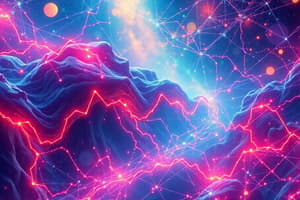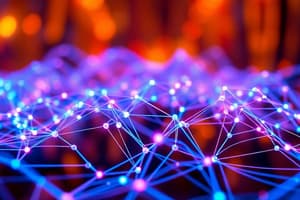Podcast
Questions and Answers
Explain the structure and function of LSTM (Long Short-Term Memory) networks.
Explain the structure and function of LSTM (Long Short-Term Memory) networks.
LSTM networks are a type of recurrent neural network (RNN) architecture designed to overcome the vanishing gradient problem. They are capable of learning long-term dependencies by maintaining a cell state and using various gates to control the flow of information, including input, forget, and output gates. This enables them to selectively retain or discard information over time, making them well-suited for tasks involving sequential data such as natural language processing and time series prediction.
What are the key components of an LSTM network and how do they contribute to its function?
What are the key components of an LSTM network and how do they contribute to its function?
The key components of an LSTM network include the cell state, input gate, forget gate, output gate, and various activation functions such as the sigmoid and tanh functions. The cell state serves as the memory of the network, allowing it to retain information over long sequences. The input gate controls the flow of new information into the cell state, the forget gate determines what information to discard from the cell state, and the output gate regulates the information that will be output to the next layer of the network. The activation functions help in controlling the flow of information and in making the network capable of learning complex patterns.
How does an LSTM network differ from a traditional RNN, and what advantages does it offer?
How does an LSTM network differ from a traditional RNN, and what advantages does it offer?
Unlike traditional RNNs, LSTM networks are designed to address the vanishing gradient problem by maintaining a more stable gradient flow over long sequences. This allows them to learn long-term dependencies more effectively, making them particularly well-suited for tasks involving sequential data. Additionally, LSTM networks can selectively retain or discard information over time, which gives them an advantage in capturing complex patterns and relationships within sequential data.
Flashcards
LSTM Network
LSTM Network
A type of recurrent neural network (RNN) that excels at remembering information over long sequences by using special 'gates' to control the flow of information.
Cell State
Cell State
The core of an LSTM, it stores the 'memory' of the network, accumulating and modifying information over time.
Input, Forget, and Output Gates
Input, Forget, and Output Gates
These gates control the flow of information into and out of the cell state, allowing the network to selectively remember or forget information.




